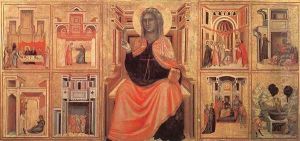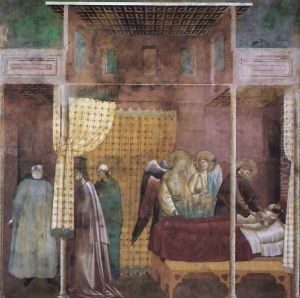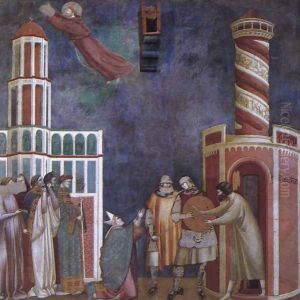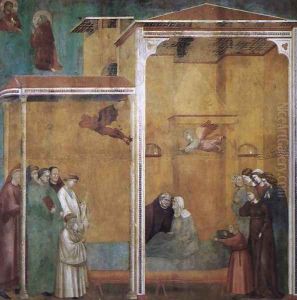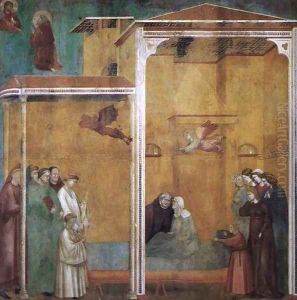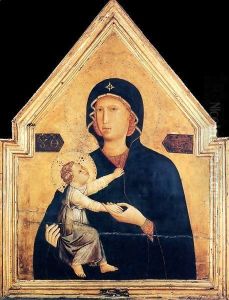Master of Saint Cecilia Paintings
The Master of Saint Cecilia is a name given to an anonymous Italian painter who was active in Florence from the late 13th century to the early 14th century. The name 'Master of Saint Cecilia' is a notional name, which means it is a name assigned by art historians to an artist whose real name is unknown, but who can be identified through a specific style or a particular work. This practice is common when discussing medieval and early Renaissance artists whose personal details have not survived the passage of time.
The Master of Saint Cecilia is best known for the 'Saint Cecilia Altarpiece', which is now housed in the Uffizi Gallery in Florence, Italy. The altarpiece is named after Saint Cecilia, the patron saint of music, who is depicted in the central panel surrounded by other saints and angels. This work is characterized by its detailed narrative scenes, vibrant colors, and a mix of Byzantine and Gothic stylistic elements. It reflects the transition from the medieval Byzantine artistic traditions to the more naturalistic and human-centered art of the Renaissance.
The altarpiece was originally painted for the Church of San Giovanni in Florence and is considered an important work for understanding the development of Florentine painting. The Master of Saint Cecilia's contributions to art history include his use of expressive faces, his attention to the drapery of garments, and the integration of architectural elements that give a sense of depth and space to his compositions.
Despite the prominence of this masterpiece, little is known about the life of the Master of Saint Cecilia. His other works, if they have been identified, have not achieved the same level of fame as the Saint Cecilia Altarpiece, and documentary evidence about his life, training, and career remains scarce. The exact dates of his birth and death are unknown, and his oeuvre is reconstructed primarily through stylistic analysis of the Saint Cecilia Altarpiece and other works attributed to him by scholars.
